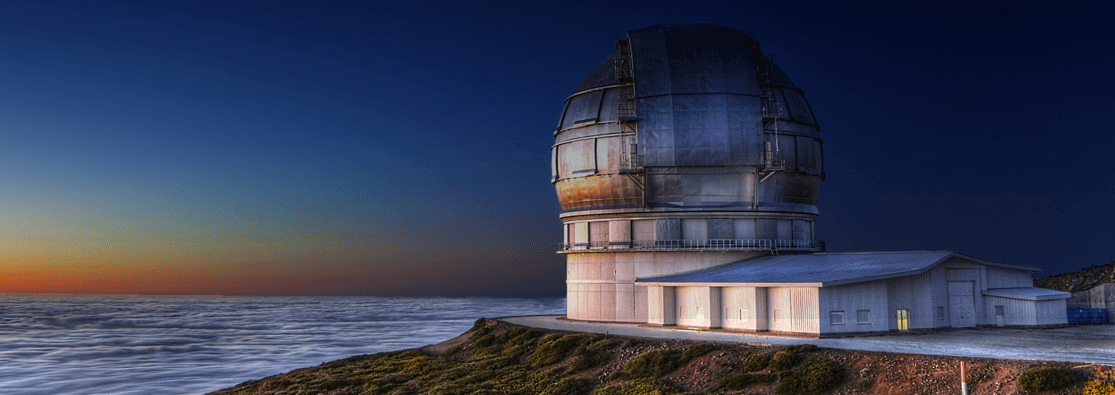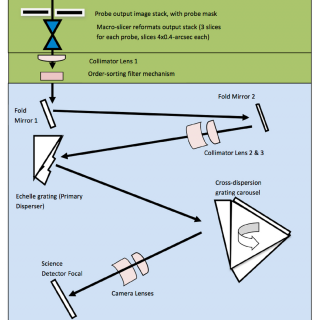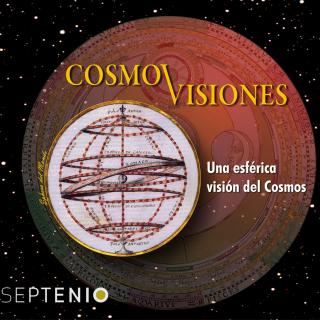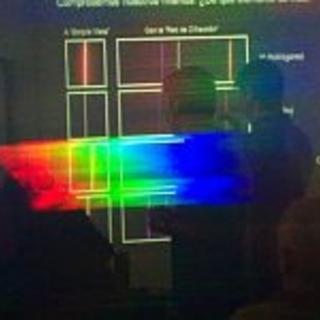Gran Telescopio CANARIAS


The Gran Telescopio CANARIAS (GTC) is a 10,4 metres primary mirror reflecting telescope. It is designed to incorporate the most up-to-date technology and it is one of the most advanced telescopes in the world and the largest of the optical-infrared.
The GTC's primary mirror, that uses thin mirror technology to keep down weight, is made up of 36 hexagonal segments, which, when put together, have a light-collecting surface of 75.7 m2, equivalent in size to a single, circular mirror with a diameter of 10.4 metres. As well as the primary mirror, the GTC will have a secondary and a tertiary mirror to deflect light to the foci, where scientific instruments can be mounted.
Image quality is crucial and, in addition to its large light-collecting surface, the GTC will use two systems to optimize it active optics and adaptive optics. Active optics will be used to align, bend and move the mirrors (the primary and secondary mirrors) to keep them in exactly the same shape and position regardless of external conditions such as the weather, temperature, gravity and manufacturing imperfections that would otherwise affect image quality.
Adaptive optics is a new technology being developed for the world's leading telescopes that involves the use of flexible mirrors to compensate for the aberrations caused to light as it passes through the earth's atmosphere. When in place, it will allow the Universe to be observed almost as clearly as if there were no atmosphere.
The mount is of altazimuth type to allow the telescope to swing in two directions the horizontal and the vertical - and its mechanical structure allows observation free from vibrations, which will also reduce the clarity of the image.
In addition, the telescope has a dome to protect it it will prevent exterior and interior air turbulence, which can degrade the image.
The GTC will use observing time efficiently by employing a "queue scheduling" system of observation, a process that automatically decides which instruments and what types of observations are most suited to the atmospheric conditions at any given time. It will also have an advanced control system and will be highly reliable thanks to a programme of preventive maintenance designed to deal with problems before they arise. This will ensure that downtime caused by system failure is kept to a minimum.
The Instituto de Astrofísica de Canarias (IAC) first put forward the idea of building a large telescope in 1987. With the GTC, the IAC was to take one step further in its push to compete and stimulate developments in technology and industry.
The GTC's construction is being carried out by the public enterprise "GRANTECAN," created with the goal of gaining efficiency in the paperwork and production of the project and other preparatory plans and investments for its operation. The Comunidad Autónoma de Canarias and the Spanish General State Administration are partners of this enterprise.
Moreover, the Instituto de Astronomía de la Universidad Nacional Autónoma de Mexico, (IA-UNAM) and the Instituto Nacional De Astrofísica, Óptica y Electrónica, (INAOE), cofinanced by the Consejo Nacional de Ciencia y Tecnología de México, (CONACYT) are contributing 5% of the project's total cost, as well as the University of Florida (United States of America), which participates with the same percentage. In return, both countries will get 5% of the observing time and are therefore integrated in the Committee for the Monitoring and Use of the GTC.
The GTC will 'see' the farthest, faintest objects in our Universe. This is like travelling through time - the light that reaches us from the remotest objects in the Universe started its journey some 15,000 million years ago and it will help provide answers to many questions about how the known Universe was created.
With the GTC we will pick out the planetary systems of the stars around us, explore dark matter, unveil stars 'being born' behind shrouds of dense molecular clouds, 'see' the remotest galaxies and quasars, look more closely than ever before at certain black holes and how they evolved and find out what chemical compounds were created in the aftermath of Big Bang. Discovering planets similar to Earth in other star systems is one of the GTC's great objectives.


